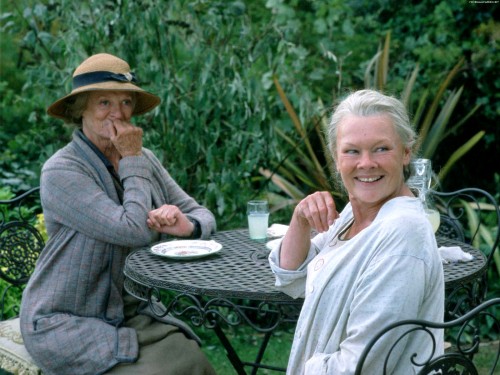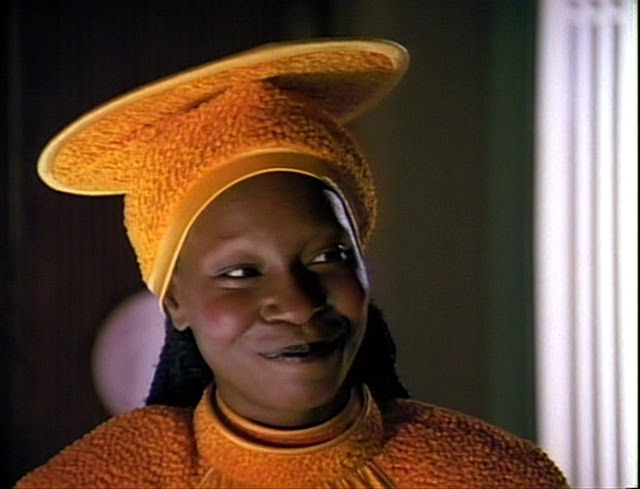This guest post by Joanne Bardsley appears as part of our theme week on Female Friendship.
Female friendships in film are marginal affairs in almost every sense. Hollywood blockbusters rarely pass the Bechdel test. Films that explore female friendships are generally made by smaller production companies and destined for independent cinemas; they exist on the margins of the entertainment industry.
The marginalised place of female friendships in film extends to the timing of the friendship. Many films that genuinely explore the complexity of female friendship, which allow it to move beyond stereotypical female behaviour, site these relationships on the “margins” of life, on the periods either side of fertility.
In Steel Magnolias (dir. Ross, 1989), for example, Ouiser (Shirley MacLaine) and Clairee (Olympia Dukakis) squabble, criticise, tease, and trick one another. In the final scenes of the film, Clairee offers Ouiser as a punching bag to M’Lynn (Sally Field). Ouiser is offended, but eventually signals her forgiveness of Clairee by pushing her off a bench. This relationship may have its caring, mutually supportive aspects, but it admits the possibility of violence and aggression. There are other, more conventional, even stereotypical, female friendships in the film where the relationship is based on mutual support, emotional intimacy and empathy. What marks this relationship out is that both parties are well beyond their fertile years.
The complex and shifting nature of mature friendships is also seen in The Divine Secrets of the Ya-Ya Sisterhood (dir. Khouri, 2002). Again, these are friendships that have lasted decades. The Ya-Yas keep each other’s secrets and support each other as is common in the representations of younger female relationships, but they also threaten and swear at each other. The swearing and threats indicate the durability of the relationships between the women. They are able to test the friendship because they trust to its ability to survive. Again, the representation moves beyond the stereotypical traits of female friendship, and again, the friends are post-menopausal.
On the other side of the fertile period, The Sisterhood of the Traveling Pants (dir. Kwapis, 2005) explores a friendship that has developed through the years of childhood and is about to be tested as the friends move into adulthood. The friendship here begins before birth (their mothers all attend the same prenatal classes). The film’s catchphrase–“Together apart”–acknowledges that adulthood will probably separate the friends physically and mentally. The film attempts to promise that the friendship will be strong enough to survive these separations, yet offers little explanation of how that will happen. They are now fertile, so the main focus of their lives must shift. They must find suitable mates, bear and raise children; they must perform the primary functions of the female.
For some females, these primary functions are denied and they must exist in the margins for their whole lives. Ladies in Lavender (dir. Dance, 2004) invites us to pity these women. The elderly sisters Janet and Ursula (Maggie Smith and Judi Dench) live a peaceful life together until their relationship is disrupted by Ursula’s sexual longing for a young violinist (Daniel Bruhl) they rescue from the sea. Ursula’s desires are shown as futile and inappropriate until she speaks about the lack of men in her life. All the men with whom she could have had a relationship have been killed in the First World War. At this point our feelings change from disgust to pity. We become willing to sympathise with her passion for the young man; after all, her only meaningful relationship is a friendship with her sister. At the end of the film she chooses to leave the young musician with his new friends in the city and returns to her provincial, marginalised existence, relying on her friendship with her sister for her primary emotional bond.
The implication of the relative richness of the representations of female friendships at either end of the fertile period is that at these times the female is free to explore relationships which are not sexual but during the fertile period the female’s most important relationships are sexual. This is damaging and dangerous as it is a structural reinforcement of the objectification of women. We only see our friendships represented on screen when we are no longer of use to the patriarchy, when we have either yet to serve our function or have already performed our reproductive duties. It is only in the margins that we are free to pursue our own interests.
Jo Bardsley is a behaviour specialist in an inner city London school. She has a BA in English and a Masters in Education.








